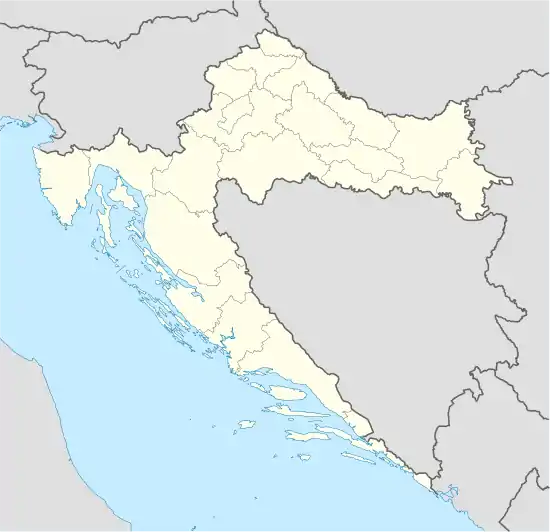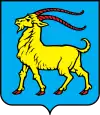Raša, Istria County
Raša (Italian: Arsia, Chakavian: Aršija) is a municipality in the inner part of the Raška Inlet in the south-eastern part of Istria, Croatia. Raša lies 4.5 kilometres (2.8 mi) southwest of Labin at an elevation of 10 m (33 ft).

Raša | |
|---|---|
| Raša Municipality | |
 Flag  Coat of arms | |
 Raša Location of Raša in Croatia | |
| Coordinates: 45°05′N 14°05′E | |
| Country | |
| County | |
| Elevation | 10 m (30 ft) |
| Population (2011)[1] | |
| • Municipality | 3,183 |
| • Urban | 1,440 |
| Demonym(s) | Rašanka (female) Rašanin (male) |
| Time zone | UTC+1 (CET) |
| • Summer (DST) | UTC+2 (CEST) |
| Postal code | 52223 Raša |
| Vehicle registration | PU |
| Municipality day | November 4 |
| Patron saints | St. Barbara |
| Website | www |
Situated in the valley of the Krapanski Potok (a tributary of the river Raša), near the former village of Krapan in 1785.
Raša was built as a "new town" during 1936-1937 as part of Mussolini's urban colonization of Istria and other Italian territories. Planned and designed along rationalist principles by architect, Gustavo Pulitzer-Finali from Trieste, Italy, the mining town is organized along a linear axis connecting Upper and Lower Raša. Lower Raša comprises houses for ordinary miners set along two parallel streets while Upper Rasa is organized along 3 parallel streets with similar houses but slightly larger in size designated for senior miners and supervisors. Smaller residential enclaves were organized throughout the elongated plan, one of which is "villette", a gated series of small urban villas designated for mining executives. The town centre connecting Lower and Upper Raša included a large square with hotels, post office, supermarket, movie theatre, pharmacy, administrative offices and small arcaded shops. Overlooking the square is the church of Santa Barbara (patron saint of miners). The church is in the shape of an overturned coal wagon while its bell tower alludes to a miner's lamp. Centrally located are also the town hospital, football field, bocci terrain and swimming pool with diving tower and bowling alley. Decades after the mine's closure, Today, Raša's appearance is part of a memory album of town planning, whereas the sound of coal wagons belongs to bygone days.
References
- "Population by Age and Sex, by Settlements, 2011 Census: Raša". Census of Population, Households and Dwellings 2011. Zagreb: Croatian Bureau of Statistics. December 2012.
